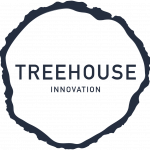How to make hybrid working work
Ever since the pandemic, businesses everywhere have been trying to establish how to make hybrid working work for them.
Having a mix of remote working and office working is now the norm, and it’s not going anywhere. To remain successful and competitive, businesses need to embrace the hybrid working model and figure out how to make a hybrid workplace a success.
As an innovation consultancy working with organisations around the world, we’re used to having to navigate the hybrid challenge ourselves. Whether it’s arranging design thinking training for a globally dispersed team, bringing people in multiple countries together for a hackathon, or advising leadership teams on how to use human-centred design to guide hybrid teams through uncertain times, we’ve done it all.
We’ve learnt a lot about what great hybrid working looks like, as well as the common pitfalls. So here are our tips on how to make hybrid working a success.
1. Design in partnership with your people
Hybrid working is still a new concept for most people. Most organisations are still feeling their way through this new working world.
Within any business, there will be a variety of views about what hybrid working success could look like, informed by differing priorities. So you need to find a solution together.
This is where human-centred design can help you. You need to start with empathy, and see the challenge through the eyes of the people you’re designing for. In this case, that’s your employees. What matters most to them? What do they care about?
And there’s only one way to find out – you need to ask them, and really listen to their answers. By starting from a point of empathy – rather than your own biases – you can begin to co-create solutions that will support your people and your business goals.
2. Learn from others
With any design project, we always encourage clients to gather insights from the wider market, to inform their approach.
So, as well as talking to your own teams, take some time to speak to other people running a hybrid workplace. Ask how their organisations are managing the challenge. What can you learn from them?
 3. Don’t pass judgment
3. Don’t pass judgment
Hybrid working is an emotive subject. The world of work changed during the pandemic and, one way or another, we’re all still coming to terms with it.
Where and how people work sparks a lot of different reactions. Some people are frustrated by a workforce that now expects flexibility they could only have dreamed of. Others are struggling with the realities of remote working. And some businesses are leaning into the benefits of a hybrid model.
Wherever you’re at, when you’re designing for your team, you’ve got to listen to their needs without judgment. Allow people to be honest about what matters to them, and how they work best, and you’ll get closer to a solution that works for everybody.
4. Make the most of the tools available
The last few years have seen fantastic developments in the world of online tools designed to help bring people together, no matter where they are. So take a look at how tools designed to support hybrid meetings, collaboration, brainstorming and more can support you.
For example, all of our work with hybrid innovation teams around the world has been supported by our platform, Sprintbase – the design thinking platform built for engaging remote participants. Check it out here.
5. Test options together
The reason you’ll hear people keep referring to the ‘hybrid challenge’ is because that’s exactly what it is – a challenge. It’s not easy to get right straight away. Different approaches are going to work for different people.
Another design thinking principle can help you here: prototyping. Once you’ve spoken to your teams about their wants and needs, you can start co-creating solutions, and then test out the strongest options.
For example, your staff might want to have set days of the week when everybody is in the office, and set days when people are at home.
Or if you’re arranging training, some people might want to test out what hybrid training feels like, whilst others might want to give an all-remote option a go.
Getting hybrid right is going to be an iterative process. By designing, testing and reviewing in partnership with your people, you’ll find the right approach for your team together.
We help organisations navigate their toughest challenges, and achieve amazing results in times of change. If you’d like to talk about how we can help you, email hello@treehouseinnovation.com or contact us today.

